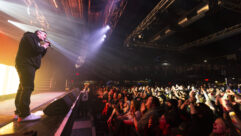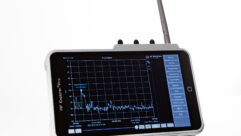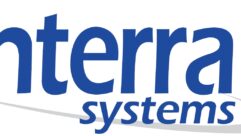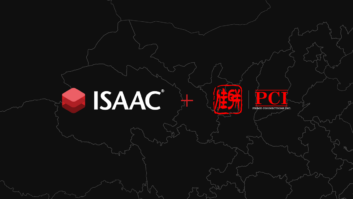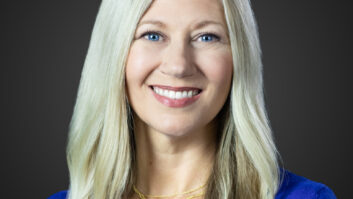On this edition of the SVC Podcast, Contributing Editor Bennett Liles talks with Ian Burnell of Featherston Media about their sound system upgrade for the First United Methodist Church in Waxahachie, Texas. Featherston Media replaced their antiquated single speaker system with RFC HDL6-A and HD10-A active speaker arrays and added a new Yamaha TF3 front of house console with a Dante interface card. Ian and his crew also installed four additional 20-amp electrical circuits to support the RCF active speakers.
Links of Interest:
· Featherston Media in Waxahachie, Texas
· RCF HDL6-A active line array
· Sennheiser EW 135 G3 wireless mics
· Yamaha TF3 digital mixing console
This is the SVC Podcast from Sound & Video Contractor with Ian Burnell of Featherston Media. We’ve got show notes and product links for this one and all of the other SVC podcasts at svconline.com. Click Podcasts at the top of the page.
The First United Methodist Church in Waxahachie, Texas had been making do with an outdated sound system and their old building didn’t have the power capacity to handle a new one. Local tech firm Featherston Media was called in. They upgraded the power and the sound for a dynamic new worship experience. Ian Burnell has the details coming up next on the SVC Podcast.
Ian it’s nice of you to join us on the SVC Podcast from Featherston Media, coming to us from Waxahachie, Texas and I don’t think we’ll get that name confused with any place else.
No, not at all.
Well, first let’s talk a little about Featherston Media. It looks like AV design and installation is just a part of what you do there so tell us about that.
Featherston Media, if you look on our web site and everything, our goal is to be our clients’ unified media solution. So besides audio, video and lighting installation and design we also provide wireless, cabling, security, access control, phone systems. We kind of do it all in a way. We like to provide all aspects for our clients, if that’s AVL or if it’s networking and IT, we kind of want to be the ones to do it all. For example, we take a church. They have an AV company, they have a security company, they have an IT company, they have a phone company. It all just gets kind of scrambled all together so we like to consolidate and make all that seamless and unify it. So that’s why we say we like to be your unified media solution. [Timestamp: 1:56]
A good business approach especially in a smaller community since for some of those services they might otherwise have to call in people from a long way off. So a having a local one-stop shop is a good idea.
Yeah, it definitely is. We kind of service the whole Dallas and Fort Worth area. We’re just south of Dallas, so we’ve kind of sat in that market of Dallas and Fort Worth. We have all sorts of clients – business clients, health, government agencies – all throughout Fort Worth and Dallas and Waxahachie area. [Timestamp: 2:27]
The First United Methodist Church in Waxahachie sounds like it might be a fairly traditional place, but what sort of a style do they have there? Is it contemporary with a live band or more conventional with just organ and choir?
The First United Methodist, they’re very traditional. I mean, as soon as you step in there you can see from their stained glass windows just how beautiful the campus is to hold their traditional values. Their kind of worship style was piano, organ, maybe a drum set. They do have a drum set, but they don’t use it that often. It was very traditional. The choir definitely was one of the big aspects of their worship. I would say instruments were on their forefront. Instrument-wise they had a piano. Sometimes they had a saxophone come in and play, and then drums. They really didn’t have guitar or bass or anything like that. So a very traditional worship style. [Timestamp: 3:15]
And it’s a pretty old building. I think it was built in the 1950’s. When they finally decided they needed a sound system renovation, how well were they keeping up the system they had? What were they using in there?
So sound system-wise they were using an old analog board. I think it was a 32-channel analog board. Speaker-wise they had one speaker up in an old PA system box and that speaker wasn’t even the one built for that PA box. Like I said, they were very traditional so they relied on their own voices and the organ and the piano, but they realized they needed something a little bit better; especially when it came to their sermons and their head pastor speaking. They realized there was quite an issue that was present. That was just because they hadn’t kept up with the technology when it came to their audio as their church grew and as technology grew. [Timestamp: 4:09]

Yeah I would think that even for a traditional service, trying to cover the whole place with a single speaker flown up there probably wasn’t working all that well. So I think you attended the WFX Worship Facilities Conference in nearby Dallas.
Yes.
So what did you find there that looked like it might be a good sound system solution for the church?
We actually had a booth at the WFX this year in Dallas. We got to meet a lot of vendors there. One thing going in to WFX is the last day, myself and my design lead made sure that we went in and listened to some of the speaker manufacturers that were there. And one of them was RCF, and that’s who we wanted to listen to for sure because we were looking for a system to be implemented into First United Methodist Church as well as a couple of other churches that needed to fit a specific budget. And so while we were there we got a demo of RCF and we knew right away that this was going to be the system that we would be able to effectively and comfortably bid and put in for First United Methodist Church. [Timestamp: 5:09]
And that was probably the easy part. When you get back to the church and talk to the church leaders about it they might not be the most tech oriented-people. So how did you communicate what you found? That might be the hard part.
Yes, it can definitely be quite hard especially if you don’t have – we didn’t have an RCF line array laying around to just demo. But when it comes to communicating with churches and with church leaders, if it’s the board or the head pastor, we like to maintain complete transparency throughout with all of our clients. And so that was very present with First United. We brought them through the design phases, kind of talked through what we were planning to do, talked with how they wanted their worship service to be, and we kind of just met in the middle where at the end of it they trusted us to whatever design that we were going to be implementing they would be comfortable with and knew it would be the best solution for them. So at the end of it, it wasn’t actually very hard to get across to them. [Timestamp: 6:08]
It’s going to always be a leap of faith to some degree but if they trust your honesty and your experience that certainly helps. They decided to turn you loose on this project and I think it was done in two phases. What was involved in each phase of it?
The first phase was going to be getting the infrastructure in, so recabling all the audio cabling and cleaning up what we could while we were there in the first phase as far as on stage. So in the first phase we implemented the infrastructure, which included six HDL6A line arrays and they were in white. That was very important to them because as being very traditional aesthetics is something that doesn’t go over very easy when you make a big change like that in a traditional church. And then we also installed two of the HD10 speaker monitors in their choir loft because before they had two passive speakers in there. So the RCF’s being powered definitely was a huge benefit when it came to saving the end cost of copper and everything. So in phase one we basically installed the speakers and that included the line arrays and the choir speakers. [Timestamp: 7:13]
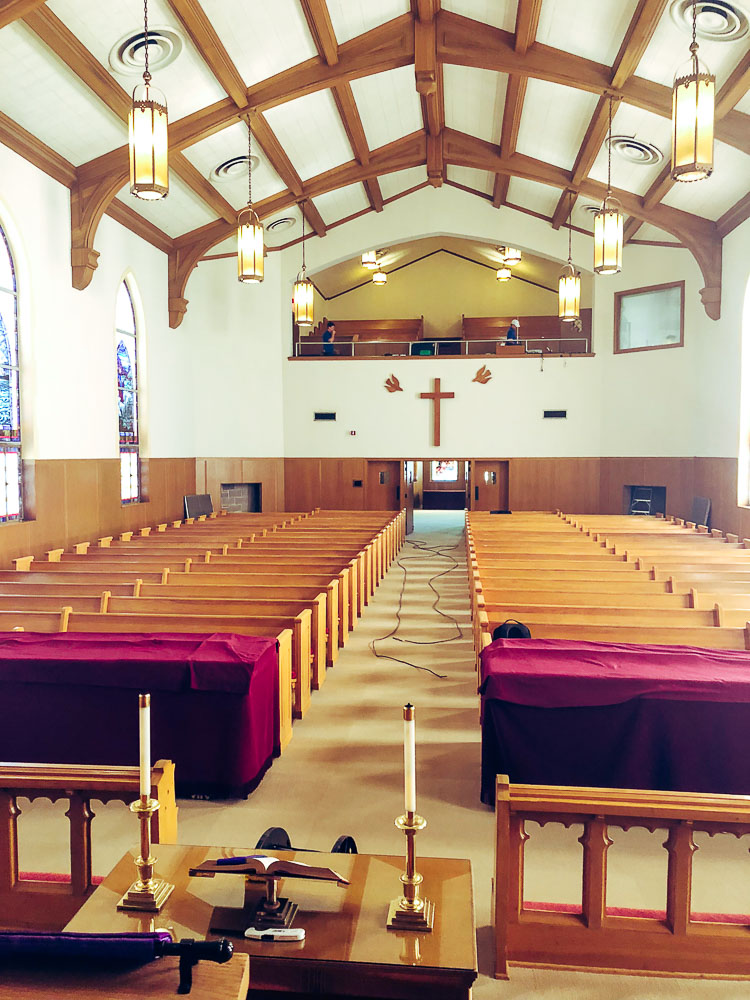
Laid a good foundation and I guess you went right on into phase two?
Phase two was replacing their old analog board. The initial thought was we would come in at least a couple months after, but after installing the speakers the church saw what a difference it made if they wanted to go ahead and move forward with phase two. So in phase two we went ahead and replaced their board with the Yamaha TF3 board and then we also installed the TO stage box which allowed us to install a digital snake on stage so that we could control and monitor their in-ear monitors that we also did for them. We replaced some of their wireless mics with some new Sennheiser wireless mics and gave them all new in-ears for their piano player, their drummer and things like that. And then we tied that all in with the Yamaha TF3 and then the Atlas BlueBridge DSP processor. [Timestamp: 8:06]
So you really got them outfitted on every front on the sound system.
Yeah, we definitely were able to do that.
I looked at the RCF speakers and they have some models that are quite a bit bigger and more powerful active speaker units. Why did you decide on the HDL6A? Just for something to clarify the sound more than for a big increase in power?
Yeah, exactly. I mean, there are two main reasons why we chose the HDL6’s. First, like I mentioned before, is just their style of worship at First United. With their style of worship if we wanted to go with something more powerful it would have, in the end, been overkill for their style of worship and their style of sermon. Second was the price. We were able to stay within a budget that the church was comfortable with as well as by going with the HDL6’s it allowed us to implement other things like the new TF3 console with the Dante integration card as well as the Atlas DSP and the choir monitors. And it also allowed us to give them new Sennheiser mics and Sennheiser in-ears. So by going with the HDL6’s it freed up some of the budget allowing them to be more comfortable with the overall design. So we weren’t just going to do speakers, we wanted to make sure that they were completely taken care of on their whole audio infrastructure, which by going with the HDL6’s it allowed us to do that. And then the other point, they came in white, which like I said before was a huge benefit for them with their style being traditional. [Timestamp: 9:28]
A smart move in enabling you to spread the money around. Now the HDL6A and the 10’s are active systems and this is an old building. Maybe they didn’t have sufficient power for these new active speaker systems so did you have to do anything on adding to their power capacity?
Yeah we did, but it was actually easier than expected. When you think of a 1950’s building you’re like oh, maybe you’re going to run into any type of issue. And all projects present blocks you have to get through. But this is actually pretty easy. There was a conduit already ran exactly where we needed and it was empty. So it was put there knowing in the future that something could be added there. So what we did is we went and added four 120-volt 20-amp circuits for the line arrays and the monitors along with five receptacles. And like I said, it actually came out to be a lot easier than anticipated with the fact that conduit ran to just about all the places we needed. [Timestamp: 10:22]
That worked out much easier than it could have. It would have been a tough job to run all that conduit and do it all from the ground up. It’s been interesting hearing about that part of it and we’ll go deeper into the details in Part 2. It’s Ian Burnell from Featherston Media in Waxahachie, Texas in the Dallas area and the First United Methodist Church comprehensive AV system renovation. Thanks Ian, for being with us and we’ll see you next week.
All right. Thank you very much.
The new sound system at the First United Methodist Church is up and running. Next week Ian will tell us about the Yamaha TF3 mixer, Sennheiser wireless mics and more on the active RCF speakers they set up. Be with us for that coming up next week on the SVC Podcast.


